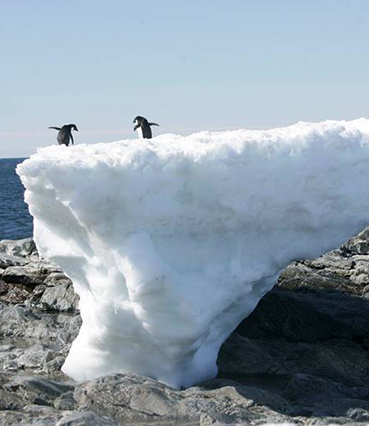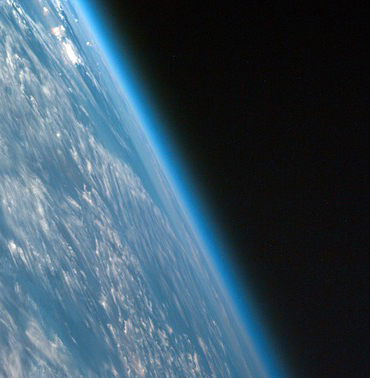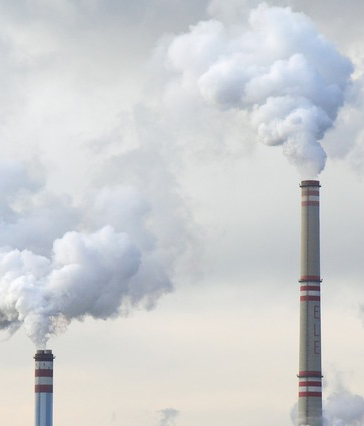T.S. ELIOT
CLIMATE CHANGE BASICS
That the earth has gotten increasingly warmer over the past 140 years is well established. Temperature data compiled since 1880—which has been verified by land-based weather stations, weather balloons, satellite measurements, sea and ocean temperature records, tree rings and various other sources—confirms it.
Short-term temperature fluctuations in specific countries or regions are due to weather patterns and do not change this underlying reality.
In fact, we are witnessing this phenomenon right now. According to the National Oceanic and Atmospheric Administration (NOAA), July 2019 was the hottest month ever recorded, and 2019 is the second hottest (and wettest) year ever recorded. So far the hottest year was 2016, with every year since 2014 being ranked in the top five.
This global warming trend correlates with another trend, increasing concentrations of carbon dioxide (CO2) and other greenhouse gases (GHGs) in the earth’s atmosphere. Much of this CO2 increase over that time has been traced to the burning of fossil-based fuels, such as coal, oil and natural gas.
We know this because there is a chemical difference between most naturally occurring CO2 and the CO2 from fossil fuels. The CO2 naturally released in the atmosphere through the earth’s carbon cycle contains carbon-14, whereas CO2 from fossil fuels does not.


The Greenhouse Effect
The earth’s atmosphere is unique among all other planets. It acts as an insulating blanket, trapping just enough energy to create a climate that is hospitable to life. That is because the atmosphere contains small amounts of very powerful gases that absorb, store and re-radiate heat energy from the earth, heat that would otherwise escape to space. These gases, which include water vapor, carbon dioxide, methane, ozone, and nitrous oxide, are known as “greenhouse” or “heat-trapping” gases.
That the GHGs in our atmosphere trap heat and warm the planet has long been established. In 1859, Irish physicist John Tyndall published a series of studies on the way GHGs, including carbon dioxide, trap heat in the Earth’s atmosphere.
When levels of heat-trapping gases in the atmosphere increase, they trap more heat from the earth, making the earth warmer. And that’s what’s happening today.
The Carbon Cycle
The carbon cycle is the miraculous process by which the earth maintains the proper balance of carbon dioxide in our atmosphere required for sustaining life.
Through this process carbon, an essential component of virtually all life on earth, is continuously cycled and reused. Trees and other plants, as well as the ocean, are designed to remove carbon dioxide from the atmosphere. That carbon then helps support life by being transferred to people, animals and the soil.
The carbon cycle perfectly balances the amounts of carbon stored in the atmosphere, ocean, and deep in the earth’s crust as coal, oil, and natural gas. But what happens when something alters that balance?


Mankind’s Role
When we extract oil and coal from deep within the earth’s crust and burn it in ever increasing quantities, we throw a monkey wrench into the carbon cycle. We are releasing that stored carbon from bygone eras back into the atmosphere as carbon dioxide over much shorter time scales than would naturally occur–years, rather than millennia. That upsets the carbon balance and causes excess carbon dioxide to build up in the atmosphere, where it begins to trap too much of the earth’s heat.
This is also well established. Alexander Graham Bell figured this out back in 1917, pointing out that the unchecked burning of fossil fuels “would have a sort of greenhouse effect” and noted “The net result is the greenhouse becomes a sort of hot-house.”
While scientists do not know everything there is to know about our climate, nor can they predict every impact of climate change with 100% certainty, more than enough is known and witnessed today for it to be prudent—and therefore conservative—to heed the warnings and take action to reduce greenhouse gas emissions.
Because how we choose to reduce these emissions matters greatly, it is important that conservatives be constructively engaged in efforts to address climate change. Throughout the nation’s history, conservative leadership has produced the most effective, efficient and enduring solutions to our environmental problems—from smog and water pollution to ozone depletion and acid rain, conservative leadership has been instrumental to finding the best solutions.
There are many things that can be done to address climate change and to reduce GHG emissions. Conservatives should favor solutions that are not only effective, but also smart, efficient, fiscally responsible and economically sound. Improving energy efficiency and relying more on cleaner forms of energy are obvious steps in the right direction.
Achieving the level of carbon dioxide reductions scientists say are needed to reduce the risk of catastrophic impacts will require some broader mechanism to limit emissions. CRS prefers market-based mechanisms that attach a cost to carbon pollution and encourage investment in greater efficiency and cleaner fuels. However, without conservative support, market-based approaches will likely lose out to the command-and-control regulations favored by liberals.
There is nothing remotely conservative about ignoring or rejecting all of this scientific evidence.
